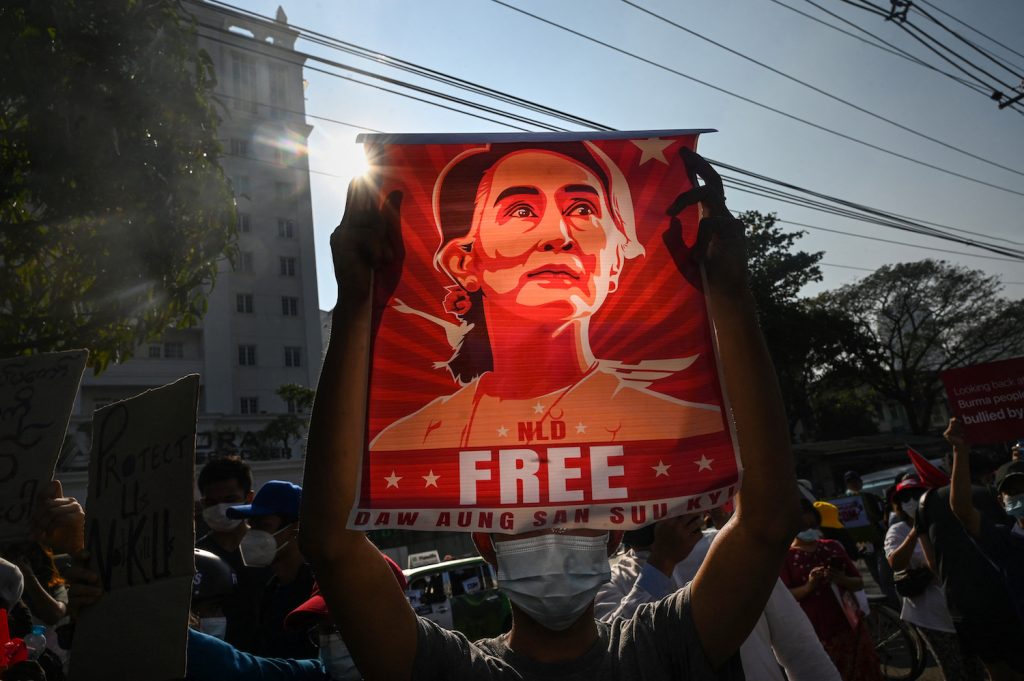By AFP
Ousted leader Daw Aung San Suu Kyi seemed in good health as she appeared in court on Monday, her lawyer said, as her trial continued with the capital grappling with a COVID-19 spike.
The Nobel laureate has been largely invisible since being detained by the military in February, with a handful of court appearances in a special court in Nay Pyi Taw her only link to the outside world.
The latest hearing comes after authorities reported 2,318 new confirmed infections – with over a fifth of tests coming back positive – the highest daily coronavirus caseload for months.
Eating inside restaurants in the military-built capital was banned from Monday, and more restrictions are expected.
There had been no instruction regarding the virus from the court – where mask-wearing is mandatory – and “we are proceeding as usual”, Daw Min Min Soe, a member of Aung San Suu Kyi’s legal team, told reporters.
At Monday’s hearing Aung San Suu Kyi’s lawyers cross-examined witnesses for the prosecution who allege she flouted coronavirus restrictions during the 2020 election that her National League for Democracy party won in a landslide, Min Min Soe said.
The special court also heard testimony that Aung San Suu Kyi illegally imported and possessed walkie talkies.
She appeared “fresh and in good health”, Min Min Soe added.
The Nobel laureate, 76, also faces separate charges of accepting illegal payments of gold and violating the colonial-era Official Secrets Act. She could be jailed for more than a decade if convicted on all counts.
Myanmar has been in turmoil since the generals ousted Aung San Suu Kyi’s government in February, with pro-democracy protests met by a brutal military crackdown that has killed more than 880, according to local monitoring group the Assistance Association for Political Prisoners.
In some areas civilians have formed “defence forces” to combat the military, often using hunting rifles or makeshift weapons cobbled together from household items.
Twenty-five anti-regime fighters and civilians were killed during clashes, villagers in Sagaing Region said on Sunday, after military trucks entered their area and opened fire.
AFP was unable to confirm the toll.
State-run media offered a different account of the skirmish, which took place on Friday, saying the military was patrolling the area when they were ambushed.
Soldiers fended off “armed terrorists” and later found “four mortars and six percussion lock firearms”, reported the Global New Light of Myanmar newspaper, which did not give a death toll in the village.



